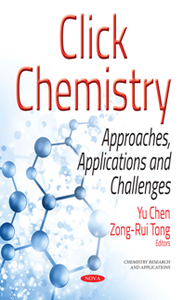Click Chemistry : Approaches, Applications, and Challenges
by Yu Chen and Zong-Rui Tong
English | 2017 | ISBN: 1536119032 | 379 Pages | PDF | 11.5 MB
by Yu Chen and Zong-Rui Tong
English | 2017 | ISBN: 1536119032 | 379 Pages | PDF | 11.5 MB
Click chemistry, which is also referred to as linkage chemistry, dynamic, combinatorial chemistry or quick linking combinatorial chemistry describes the reaction that joins molecular fragments as simply, efficient and versatile as clicking a mouse. The two units with specific click structures can be linked by a click reaction no matter what is attached to the structure, and only the specific click structures can be joined. It emphasizes the development of new combinatorial chemistries on the basis of the synthesis of efficient and highly selective carbon-heteroatom bonds (C-X-C), and effectively prepares molecules with high diversity via these simple reactions. It significantly simplified and promoted the development of synthesis chemistry. Click chemistry has become one of the most useful and attractive synthetic strategies in many fields. In this book, the definition of click chemistry is explained, the characteristics and types of click chemistry are introduced, and some specific reaction types are focused on. The progress for using click chemistry for the synthesis and functionalization of hydrogels, elastomers, surface modifications, membrane preparations, assemble polyaromatic structures, biomedical fields and optical sensing in biological analyses are described in detail. The problems and challenges for using click chemistry in different fields are analyzed.



